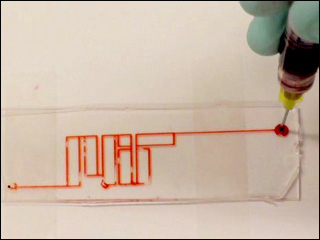Course Description
This course links clean energy sources and storage technology to energy consumption case studies to give students a concept of the full circle of production and consumption. Specifically, photovoltaic, organic photovoltaic, piezoelectricity and thermoelectricity sources are applied to electrophoresis, lab on a chip, …
This course links clean energy sources and storage technology to energy consumption case studies to give students a concept of the full circle of production and consumption. Specifically, photovoltaic, organic photovoltaic, piezoelectricity and thermoelectricity sources are applied to electrophoresis, lab on a chip, and paper microfluidic applications–relevant analytical techniques in biology and chemistry. Hands-on experimentation with everyday materials and equipment help connect the theory with the implementation. Complementary laboratories fabricating LEDs, organic LEDs and spectrometers introduce the diagnostic tools used to characterize energy efficiency.
This course is one of many OCW Energy Courses, and it is an elective subject in MIT’s undergraduate Energy Studies Minor. This Institute-wide program complements the deep expertise obtained in any major with a broad understanding of the interlinked realms of science, technology, and social sciences as they relate to energy and associated environmental challenges.
Learning Resource Types











